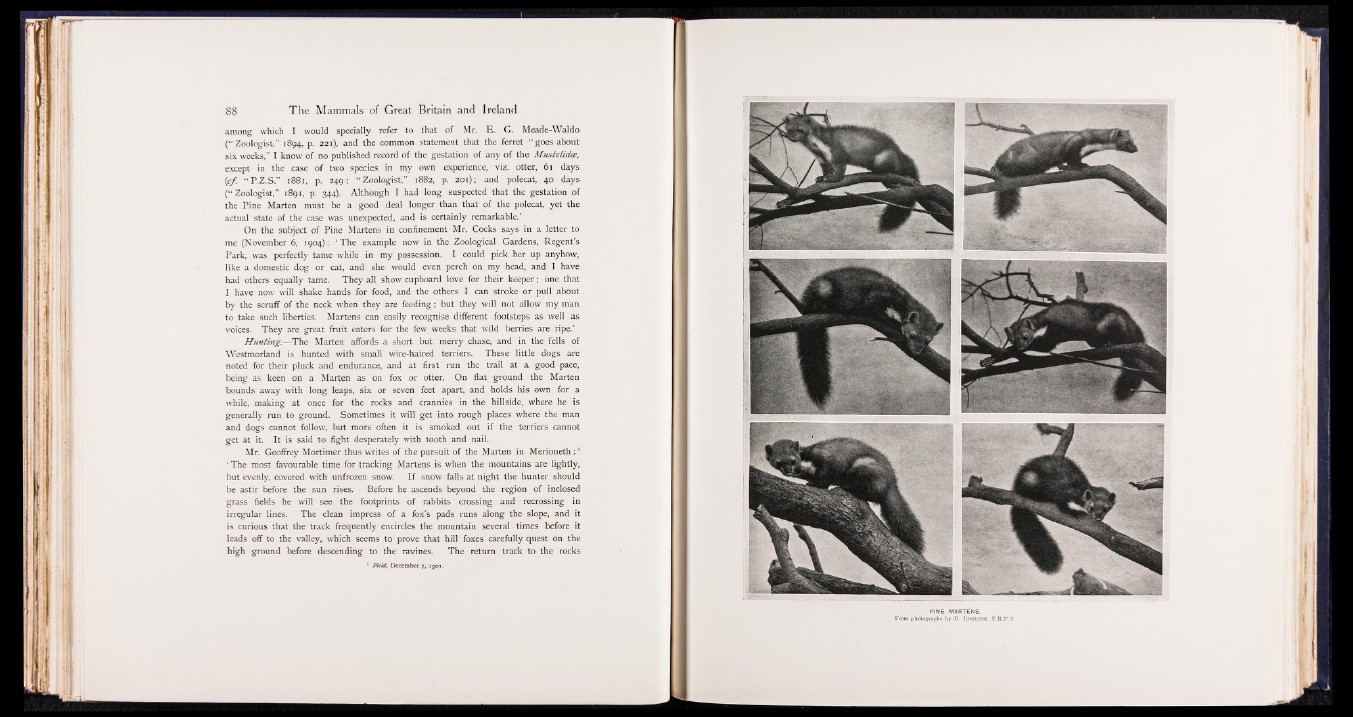
among which I would specially refer to that of Mr. E . G. Meade-Waldo
(“ Zoologist,” 1894, p. 221), and the common statement that the ferret “ goes about
six weeks,” I know of no published record of the gestation of any of the Mustelidce,
except in the case of two species in my own experience, viz. otter, 61 days
{cf. “ P.Z.S.” 1881, p. 249; “ Zoologist,” 1882, p. 201); and polecat, 40 days
(“ Zoologist,” 1891, p. 344). Although I had long suspected that the gestation of
the Pine Marten must be a good deal longer than that of the polecat, yet the
actual state of the case was unexpected, and is certainly remarkable.’
On the subject of Pine Martens in confinement Mr. Cocks says in a letter to
me (November 6, 1904): ‘ The example now in the Zoological Gardens, Regent’s
Park, was perfectly tame while in my possession. I could pick her up anyhow,
like a domestic dog or cat, and she would even perch on my head, and I have
had others equally tame. They all show cupboard love for their keeper; one that
I have now will shake hands for food, and the others I can stroke or pull about
by the scruff of the neck when they are feeding; but they will not allow my man
to take such liberties. Martens can easily recognise different footsteps as well as
voices. They are great fruit eaters for the few weeks that wild berries are ripe.’
H unting.—The Marten affords a short but merry chase, and in the fells of
Westmorland is hunted with small wire-haired terriers. These little dogs are
noted for their pluck and endurance, and at first run the trail at a good pace,
being as keen on a Marten as on fox or otter. On flat ground the Marten
bounds away with long leaps, six or seven feet apart, and holds his own for a
while, making at once for the rocks and crannies in the hillside, where he is
generally run to ground. Sometimes it will get into rough places where the man
and dogs cannot follow, but more often it is smoked out if the terriers cannot
get at it. It is said to fight desperately with tooth and nail.
Mr. Geoffrey Mortimer thus writes of the pursuit of the Marten in Merioneth : 1
‘ The most favourable time for tracking Martens is when the mountains are lightly,
but evenly, covered with unfrozen snow. I f snow falls at night the hunter should
be astir before the sun rises. Before he ascends beyond the region of inclosed
grass fields he will see the footprints of rabbits crossing and recrossing in
irregular lines. The clean impress of a fox’s pads runs along the slope, and it
is curious that the track frequently encircles the mountain several times before it
leads off to the valley, which seems to prove that hill foxes carefully quest on the
high ground before descending to the ravines. The return track to the rocks
1 Field, December 7, 1901.